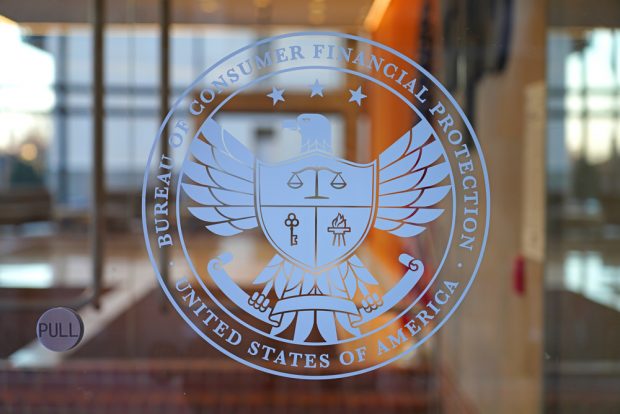 CFPB official seal. Credit/Shutterstock
CFPB official seal. Credit/Shutterstock
A recent decision by a federal district court in Texas (Chamber of Com. of U.S. v. Consumer Fin. Prot. Bureau) has gotten a lot of attention lately, and for good reason. It answers three basic questions that are asked when a regulation is challenged and does so in a way that substantially reduces the CFPB's UDAAP powers. In fact, even if the Supreme Court ultimately upholds the constitutionality of the Bureau's funding mechanism, if the district court's ruling is upheld, financial institutions, particularly larger ones, will have achieved an important legal victory.
The case has its roots in an announcement by the CFPB that it was classifying discrimination as unfair under its UDAAP powers. In a press release announcing this determination, it explained that its existing authority to ban discrimination under the Equal Credit Opportunity Act did not go far enough to enable it to prevent unintentional discrimination through the offering of products and services that have a disparate impact on minority groups. Going forward, the Bureau announced that "CFPB examiners will require supervised companies to show their processes for assessing risks and discriminatory outcomes, including documentation of customer demographics and the impact of products and fees on different demographic groups. The CFPB will look at how companies test and monitor their decision-making processes for unfair discrimination, as well as discrimination under ECOA." Remember, the CFPB has direct examination oversight over banks and credit unions with $10 billion or more in assets.
Recommended For You
The U.S. Chamber of Commerce challenged the Bureau's UDAAP powers by adopting a clever but aggressive legal strategy. Most importantly, it had to convince the court that the CFPB lacked the authority to declare discrimination a UDAAP violation; not an easy task since the Bureau has the explicit statutory obligation to protect consumers from discrimination.
Enter the "Major Questions" doctrine. Last Year the Supreme Court struck down a proposed Clean Air regulation issued by the EPA. In West Virginia v. EPA, the Supreme Court ruled that even though the EPA arguably had a statutory basis for promulgating the regulations, the powers it sought to exercise were going to have such a major impact on the economy that Congress presumably would have granted these powers only with clear language.
Similarly, the Texas District Court concluded that statutes outlawing discrimination in general and disparate impact, in particular, impact state level enforcement authority and typically are created by Congress pursuant to detailed statutes. As the Court explained, "The choice whether the CFPB has authority to police the financial-services industry for discrimination against any group that the agency deems protected, or for lack of introspection about statistical disparities concerning any such group, is a question of major economic and political significance. In this case, while the CFPB had an arguable basis for its interpretation, it was too important a question for the court to rely on anything less than crystal clear language." Not surprisingly to anyone who has read Dodd-Frank, this "crystal clear" language was lacking.
But, the Bureau argued, how could amendments to its examination manual be considered a regulation? This was an easy one for the court. Whether a regulatory pronouncement is a regulation is a question of function, not form. Regardless of whether it made these changes following a formal rule making process or simply by announcing changes to its examination manual, the Bureau's action constituted a regulation since it articulated new requirements from which legal obligations arise.
Last but not least, the Bureau argued that the Chamber of Commerce did not have standing to bring this lawsuit. After all, it did not identify a single financial institution that was willing to claim it was being harmed by the Bureau's actions. The court ruled that the chamber could establish standing so long as it represented members who were being harmed by the manual changes. This is a bigger deal than it might seem. After all, there are not too many financial institutions that want to openly sue their regulator.
At this point we are just dealing with a single district court issuing a decision that seems destined for appellate review. Still, it provides a road map to future litigants and may make agencies think twice about the legal basis of the authority they are exercising.
 Henry Meier, Esq.
Henry Meier, Esq. Henry Meier is the former General Counsel of the New York Credit Union Association, where he authored the popular New York State of Mind blog. He now provides legal advice to credit unions on a broad range of legal, regulatory and legislative issues. He can be reached at (518) 223-5126 or via email at [email protected].
© Touchpoint Markets, All Rights Reserved. Request academic re-use from www.copyright.com. All other uses, submit a request to [email protected]. For more inforrmation visit Asset & Logo Licensing.






